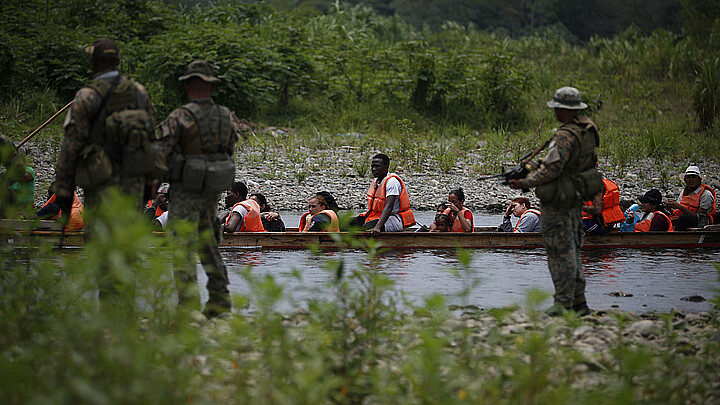Human Rights
Colombia's humanitarian situation deteriorating due to armed conflict, says Red Cross
The ICRC found evidence that the intensified conflict has left at least 180,000 people without a home last year, while it has confined tens of thousands of others to their homes or settlements

March 23, 2023 6:42am
Updated: March 23, 2023 6:55am
Colombia’s humanitarian situation deteriorated in 2022 due to a rise of clashes between illegal armed groups, according to a new report by the International Committee of the Red Cross (ICRC) released on Wednesday.
According to the ICRC’s annual report of the country’s humanitarian situation, seven fronts to Colombia’s long-lasting internal conflict intensified last year, instilling fear in residents and causing millions to become displaced.
"Unfortunately, the deterioration of the humanitarian situation continued in a large part of the country during 2022," Lorenzo Caraffi, head of the ICRC delegation in Colombia, told a news conference.
The ICRC found evidence that the intensified conflict has left at least 180,000 people without a home last year, while it has confined tens of thousands of others to their homes or settlements. The report found that at least 39,000 people were confined to their villages for days or weeks at a time due to the violence.
For more than five decades, Colombia has endured continuous internal armed conflict between paramilitary organizations, drug traffickers, criminal enterprises and Marxist groups.
In 2016, a peace treaty temporarily quelled 52 years of conflict between authorities and Colombia's most notoriously known insurgent movement, known as the Revolutionary Armed Forces of Colombia or FARC.
But non-parties to the treaty continued to engage in conflict, effectively creating the same level of violence once initiated by FARC. Many of those groups are trying to take control of drug-trafficking territories and illegal mining, with rural and Indigenous communities suffering casualties from the violence.
Additionally, the international organization found that the number of individuals injured by landmines increased in the conflict regions. Around 515 people were injured by explosives—the highest number in the past six years. At least 56 of those hurt by landmines were killed.
Attacks on medical missions also increased in 2022, with 426 attacks reported. Similarly, 209 individuals were reported as missing.
"It's a particularly complex context, of reconfiguration of armed actors, of struggle for territorial control, the social control that (armed) actors exercise against the civilian population, which finds itself in a particularly difficult situation," Caraffi said.










